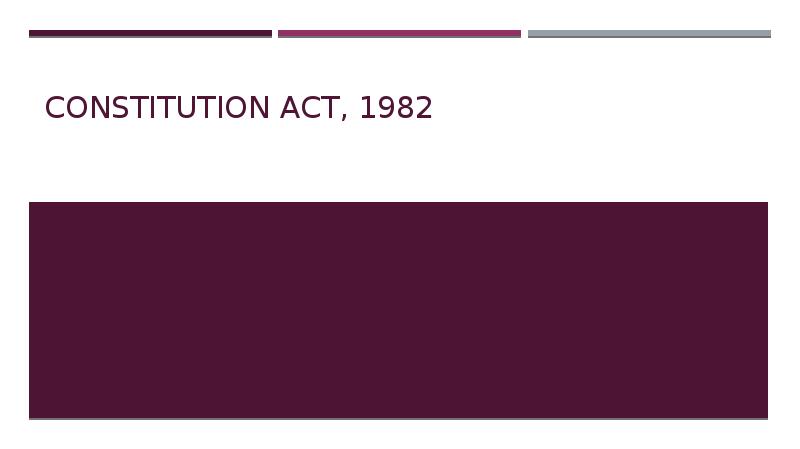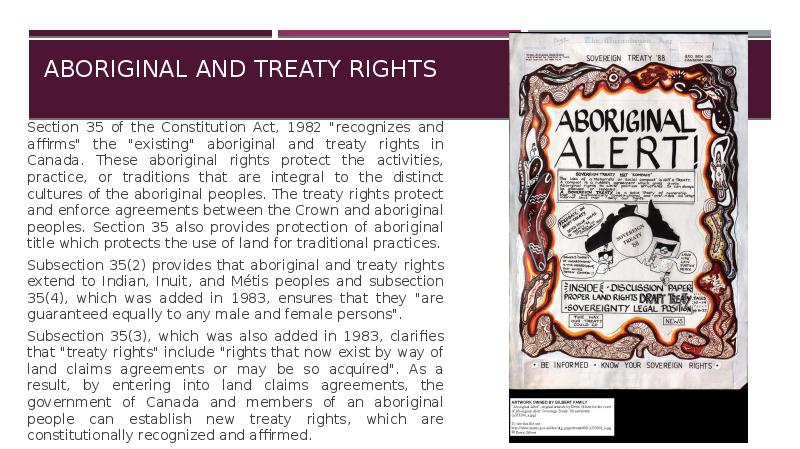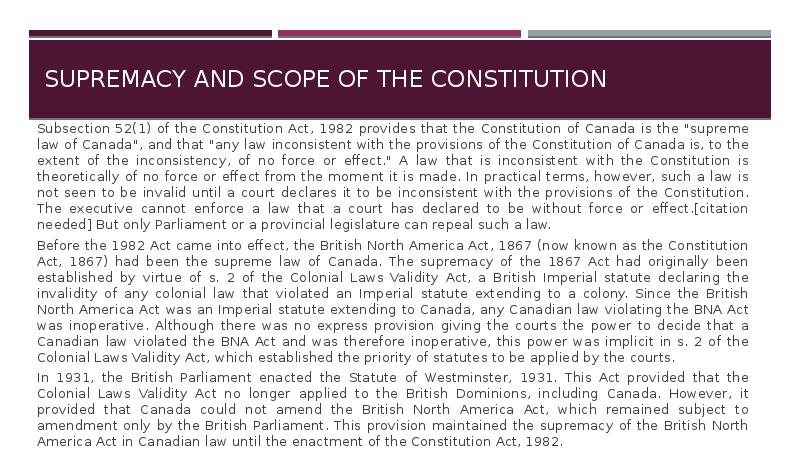Constitution Act, 1982 презентация
Содержание
- 2. The Constitution Act, 1982 (French: Loi constitutionnelle de 1982) is a
- 3. This process was necessary because, after the Statute of Westminster, 1931,
- 4. On April 17, 1982, Queen Elizabeth II and Prime Minister Pierre
- 5. Canadian Charter of Rights and Freedoms The Canadian Charter of
- 6. Aboriginal and treaty rights Section 35 of the Constitution Act,
- 7. Equalization and equal opportunity Section 36 enshrines in the Constitution
- 8. Supremacy and scope of the Constitution Subsection 52(1) of the
- 9. Скачать презентацию








Слайды и текст этой презентации
Похожие презентации





























